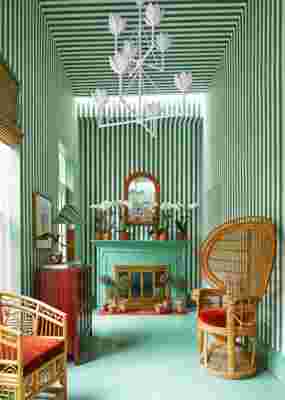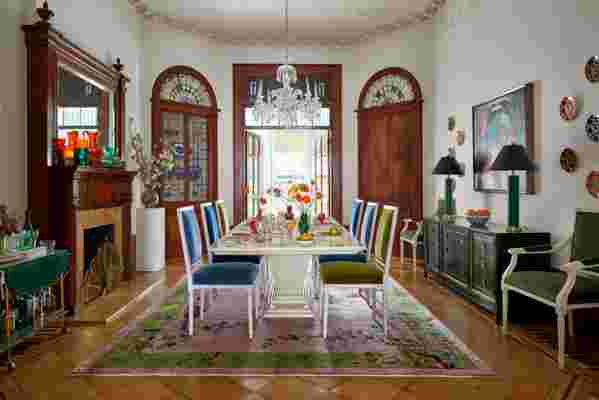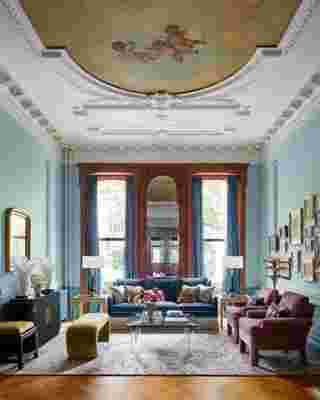See a Brooklyn Brownstone’s Colorful Twist on Old-School Style
Tony Duquette and Albert Hadley were legendary decorators known for their Old World sensibilities and unapologetic originality. In different ways—Duquette was the ultimate maximalist; Hadley had a quieter sophistication—they redefined the course of American interiors. And they were both on Nicholas Obeid’s mind when he began working on his latest project, a spacious apartment in a mid-1800s Brooklyn Heights brownstone. “I wanted to pay homage to these traditional decorators and other old-school greats in a fresh and colorful way,” says Obeid, a young New York City designer who launched his eponymous studio two years ago. “My client and I had a shared understanding that this wasn’t going to be a safe, boring apartment— definitely not another white box.”
His client, Kelsey Brown, was more than enthusiastic about the idea of boldness. Brown is the cofounder of Pepper, a company that sells home textiles and wallpapers featuring whimsical prints. She wanted to include some of these prints in her home, which she shares with her husband, Alec Simpson, while also embracing her longtime affection for classic decor. “I grew up in a historical home with lots of antiques and also a lot of color,” she says. “Nicholas understood me and he also pushed me out of my comfort zone.”

Every corner of the two-story, three-bedroom apartment is full of personality, yet there is one particularly eye-catching nook: the so-called “sun room,” a cozy space facing the property’s leafy garden that’s used for informal meals. Here, the designer echoed Duquette’s famed Dawnridge estate in Beverly Hills (an over-the-top residence awash in green), painting the entire room a Benjamin Moore color called Parsley Snips. To add drama, he created ribbons of green rising from the floor all the way across the ceiling. Vintage rattan chairs with velvet pillows in a burnt orange hue complete the fanciful look.
Obeid did not hold back. He paired candy-colored walls with rolled-arm sofas, chinoiserie with abstract art, and rattan with velvet. In the vast parlor-level reception room, he replicated the colors of the existing ceiling fresco, a celestial scene painted sometime in the early 1900s, covering the decorative plasterwork and wainscoting in dazzling shades of blue. He then added pops of chartreuse and rose throughout the space. “It’s a pretty traditional room, it just has a brighter take,” says Obeid. “I mixed in some modern pieces to balance the weight of the more classic ones.” For example, he placed a substantial sofa with bullion fringe and two dressy velvet armchairs by Milo Baughman next to a Lucite-and-glass coffee table from the 1970s. At the other end of the room, past a central fireplace with an ornate wooden mantel and antique foo dogs standing guard, the designer mixed a Jean-Michel Frank sofa upholstered in camel mohair with a lacquered black coffee table and a Hollywood Regency brass torchère.
Although every corner of the two-story, three-bedroom apartment is full of personality, there is one particularly eye-catching nook: the so-called “sun room,” a cozy space facing the property’s leafy garden that’s used for informal meals. Here, the designer echoed Duquette’s famed Dawnridge estate in Beverly Hills (an over-the-top residence awash in green), painting the entire room a malachite shade called Parsley Snips. To add drama, he created ribbons of green rising from the floor all the way across the ceiling. Vintage rattan chairs with velvet pillows in a burnt orange hue complete the look. “My client and I share an admiration for design,” says Obeid. “Everything these days is safe and flat; we wanted something that evoked a little bit more.”

